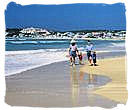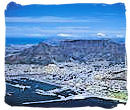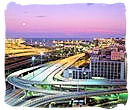 |
||
Enjoy our South African traditional food delicaciesThe South African traditional food cuisine of the "Afrikaner" community, the "Afrikaner" kitchen, stems from the original Dutch, French and German settlers who founded the Cape colony in South Africa.
Their descendents today are called "Afrikaners" (Africans), mainly because of their culture and their "Afrikaans" Language, which is a derivative of the original Dutch language. They include the "Voortrekkers" (migrating pioneers), who "trekked" (moved) into the interior of the country in their quest for independence during the 1700s and 1800 and also the "Boers" who fought the British in order to preserve that independence. In those days the ox-wagon was the only means of transport. There was no space to take along provisions on long journeys. Flour, salt, sugar, coffee and tea made up most of the basics. Meat had to be hunted along the way. 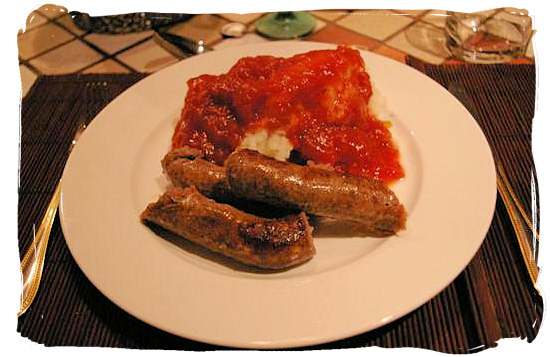 "Mieliepap, vleis en sous", (maize porridge, meat and sauce), the ultimate in South African traditional food The "Afrikaner kitchen" to a large extend stems from the original Dutch cuisine in the Cape, with contributions from the French and German immigrant communities and a large dose of Cape Malay cooking, tempered by decades of "trekking" (moving). 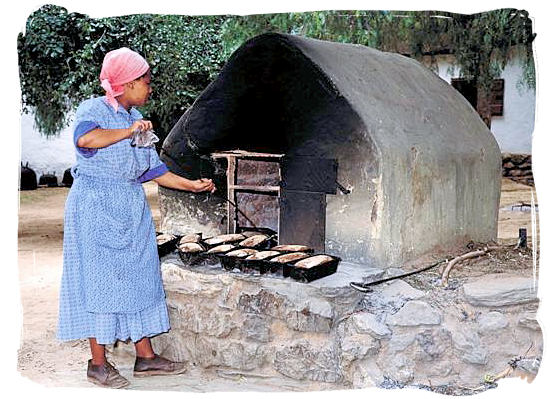 The art of bread baking, originally introduced by the European settlers - South African traditional food Next to grilling the meat over an open fire, the "Voortrekkers" often made a stew of venison and whatever vegetables they could find, in a three-legged cast iron pot, hence the name "potjiekos" (potfood). As each animal was shot, it was cut up and added to the pot. The large bones were included to thicken the stew. The surplus meat was preserved by spicing it, cutting it into strips and letting it dry. 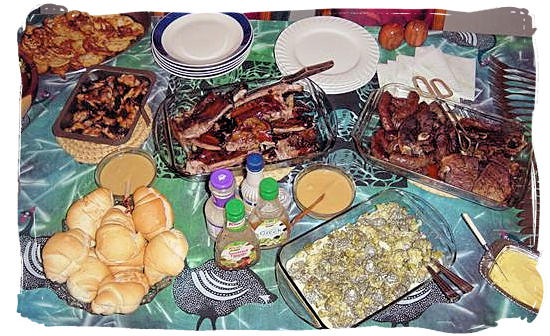 Example of a South African "braai" (barbecue) spread - South African traditional food When moving, the pot with its contents protected by a layer of fat, was hooked under the ox-wagon. At the next stop it was unhooked again and put on the fire. Old bones were replaced with new ones and fresh meat was added to replace the meat eaten. Venison included game such as guinea fowl, wart hog, bush pig, antelope, rabbit and hare. Leading physically demanding lives, the "Voortrekkers" and later the "Boers" favoured robust foods. 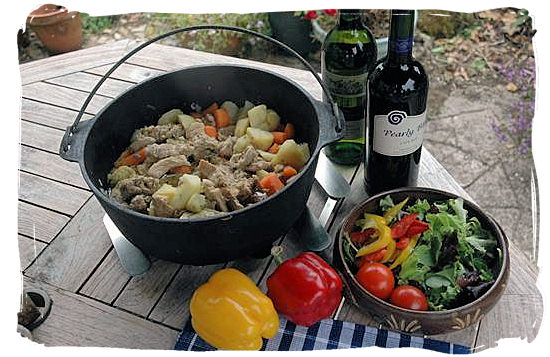 Delicious "Potjiekos" (pot stew), served with salads and accompanied by a good wine - South African traditional food In the course of time some things have changed. Lighter meals with plenty of salads, chicken and fish have become popular in urban "Afrikaner" homes nowadays. Some things however, have not changed. South Africans, and "Afrikaners" in particular, are fond of their "braai" (barbecue). It has become an institution. T-bone steaks, "Boere wors" (farmers sausage), lamb and pork chops and a variety of "sosaties" ( skewered meat) are some of the popular meats you will find on the South African barbecue. 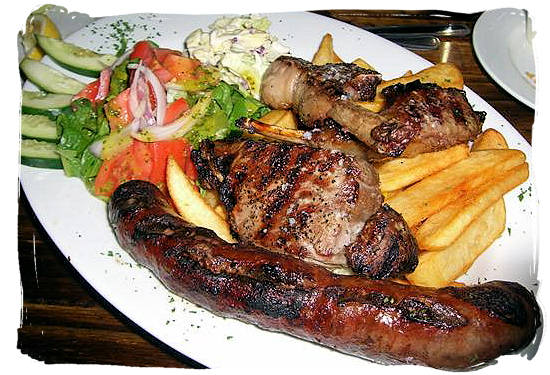 Grilled "boerewors" (sausage), steak and lamb chops with fried potato chips and salads, typical South African "boerekos" (farm house cooking) - South African traditional food The same applies for "potjiekos" ( pot food). Like the "braai", it’s a social happening, sitting outdoors with family and friends around the open fire, cooking up a delicious stew. The three-legged cast iron pot that is used is basically the same as the one that was used in the old days. The "potjie" meal is often served with salads, rice and home-baked bread on the side, plus a traditional desert. 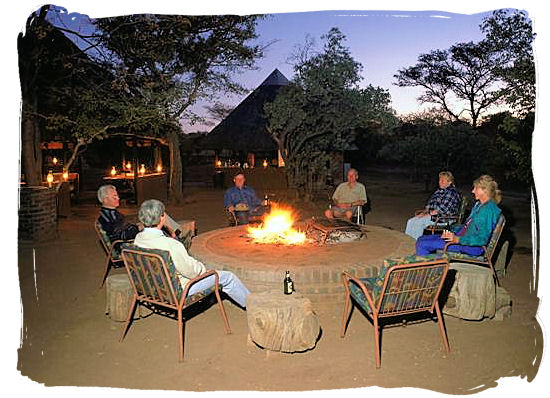 Socializing around the barbecue fire before and after the "braai" (barbecue) is typically South African - South African traditional food copyright © South African tourism A typical meal in a South African home will often feature a leg of lamb stuffed with bacon, garlic and rosemary and accompanied by roast potatoes, green beans, pumpkin and cauliflower cheese. Roast chicken could be the other meat of choice. A hefty trifle consisting of layers of sponge, fruit, jelly, custard and cream would round it all off. 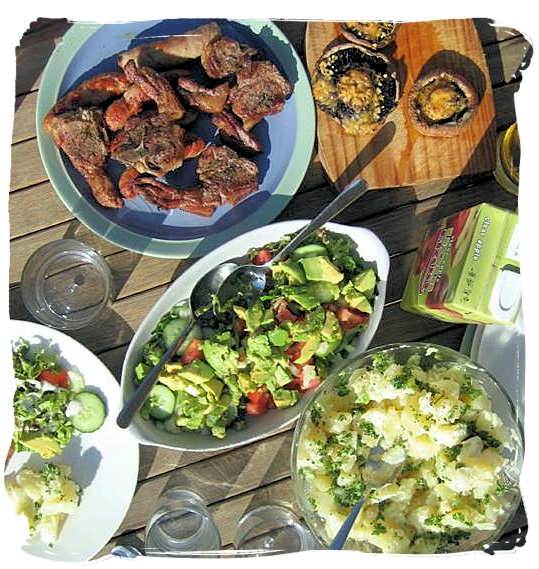 Nowadays the starch part of the barbecue meal is often replaced with plenty of fresh vegetables and salads - South African traditional food The "Afrikaner" kitchen boasts quite a range of desserts and puddings. Rich in butter, cream, sugar and spices, they are not for the calorie-conscious. luckily, every rule has its exceptions, like delicious milk-tart, cinnamon topped and rich milk custard poured into a shell of puff pastry and "Koeksisters", a small piece of plaited dough that has been deep-fried and then soaked in an aniseed-perfumed syrup, to name but a few. 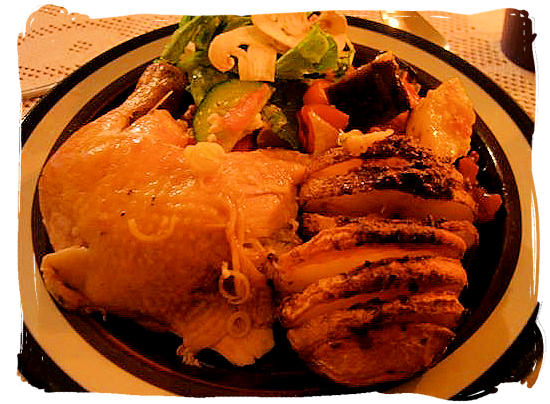 Chicken, baked potato and salads, typical South African home cooking Top of Page |
|
|
|
|
||

